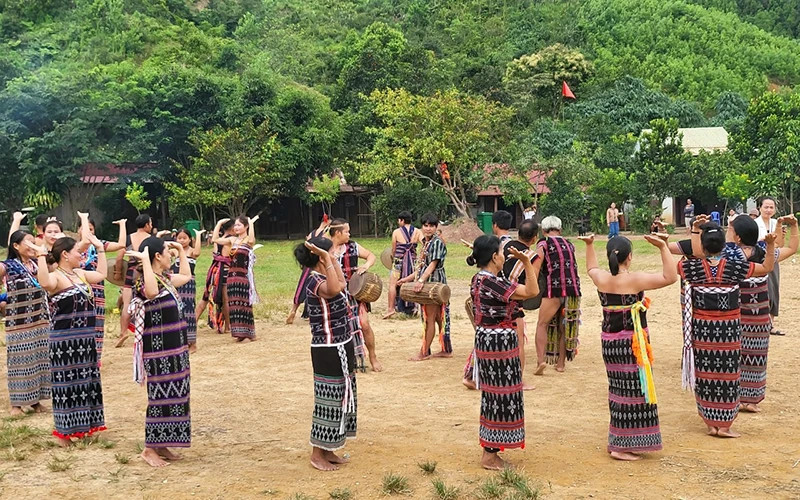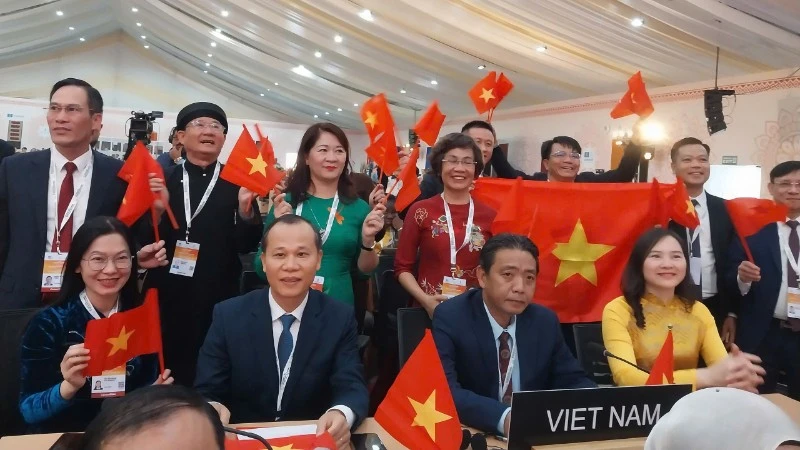Cultural institutions are a concept used to refer to cultural agencies and units established by the State, and social communities, according to the provisions of law and regulations of the sector, to meet the people’s demand for cultural enjoyment and creation. Cultural institutions not only include infrastructure and facilities but also converge factors, such as management personnel, organisation, funding and operating regulations. The operation of cultural institutions helps cultural values to be transmitted, continued, and spread, ensuring the cultural demands of the people.
The "cultural face" of a community, nation, or ethnic group can be easily identified from the system of cultural institutions, such as stadiums, theatres, cinemas, museums, libraries, cultural and art exhibition centres, performing arts centres, etc. Cultural institutions contain unique values in architecture, fine arts, and history while reflecting the level of cultural development of the community and nation, in each historical period.
From another perspective, cultural institutions are a bridge to promote the spirit of national solidarity because these are places where community activities and meaningful events of each locality often take place. The appeal of cultural events or products attracts many participants and then each individual loves and is proud of the culture of their homeland and country. If given the right opportunity, that individual will become an "ambassador" to bring national culture to the world.
Over the past years, the Party and State have always paid attention to and prioritised resources for building and perfecting the system of cultural institutions. Since 1998, in the Resolution of the 5th Party Central Committee, the Party has clearly identified the need to improve the quality of the operations of existing cultural institutions. The 13th National Party Congress set the goal of building and promoting cultural values and the strength of the Vietnamese people, particularly emphasising the innovation and perfection of cultural institutions from the central to grassroots levels, towards ensuring effectiveness.
In his speech at the National Cultural Conference in November 2021, Party General Secretary Nguyen Phu Trong directed the issue of building cultural institutions to create a foundation for developing the cultural industry and international integration. The Government's strategy for developing Vietnamese culture with a vision to 2030 sets out 10 targets, including the target on cultural institutions determining that 100% of provincial and district administrative units will strive to have cultural and sports centres and 100% of commune-level administrative units will have cultural houses by 2030.
Over the past years, implementing the Party’s and State’s policies, Vietnam has built a relatively comprehensive and synchronous system of cultural institutions from the central to the grassroots levels, from urban to rural, mountainous and island areas. Libraries, museums, theatres, cinemas, exhibition centres, cultural and artistic performance centres, stadiums, etc., have been invested in construction and repair, to become more spacious and modern. Some facilities have met international standards. The State and the cultural sector prioritise spending more of the budget to build cultural infrastructure. As of early 2024, the country had 66 provincial-level cultural institutions, including cultural centres, cultural and artistic centres, and cinema cultural centres; 98% of districts had cultural-sports centres or cultural houses; 77% of communes, wards and towns have cultural-sports centres; and 76% of villages and hamlets have cultural houses.
This is a cultural infrastructure system that brings many benefits to people in their daily lives, including creativity, practice and enjoyment of culture. As a result, national cultural values have been spread, promoting their strength and beauty in life. In addition, the cultural institutional system also plays a pivotal role in organising propaganda activities for local political and social tasks. These facilities are tools for Party leaders and local authorities to disseminate the Party and State viewpoints, guidelines, policies and laws to the people.
Moreover, the Planning of the cultural and sports facilities network for the 2021-2030 period with a vision to 2045 has been completed. So far, 42 provinces and cities nationwide have planned land to construct cultural and sports facilities. These are important foundations for culture to fulfil its mission of nurturing the people’s spiritual life, as well as enriching the country's economy.
Despite the encouraging achievements, in reality, the cultural institutional system still has many shortcomings. The most obvious are the lack of uniformity, small scale, lack of connection, and failure to meet the increasing demand of the people. While several cultural institutions have been expensively invested in, they operate ineffectively, degrade quickly, and are even abandoned, some well-functioning institutions were built on limited land, and have outdated equipment, making it difficult to organise large-scale events to serve the people.
In Hanoi and some localities, many art units are called theatres, but in reality, they have had to rent performing venues. The cinema system can hardly compete with foreign-invested cinema systems, in terms of grandeur, scale and modern equipment. At the grassroots level such as villages, hamlets, communes and wards, many cultural and sports centres operate with simple and sketchy contents, due to limited funding and weak professional apparatus.
There are many reasons for the above shortcomings, such as the lack of connectivity and synchronisation of the legal policy system, guidance documents, and implementation regulations, and the lack of attention to the specific characteristics of some cultural fields.
In early May, the workshop entitled “Policies and resources for the development of cultural and sports institutions” was jointly held by the National Assembly (NA) Committee for Culture and Education, the Ho Chi Minh National Academy of Politics, the Party Central Committee’s Commission for Communications and Education, the Ministry of Culture, Sports and Tourism, and Quang Ninh Province. The event focused on a group of key solutions related to planning cultural and sports institutions in a synchronous, modern, unique, and effective manner, towards ensuring fairness and meeting people’s demands.
Accordingly, the NA will focus on researching and perfecting investment policies for the development and operation of the cultural and sports institutions system, including public investment policies, investment policies under the public-private partnership model, socialisation policies; and other preferential policies, such as investment support, especially in terms of land, taxes, and credit capital in the construction of cultural and sports facilities; and the encouragement of economic sectors to participate in investment and development.
It can be seen that the legal basis for developing cultural institutions has been increasingly improved, but it is still necessary to emphasise the awareness of the role of cultural institutions among the leaders at all levels, in each locality. When recognising the potential and strength of the cultural infrastructure system, each locality will proactively develop appropriate cultural development strategies, towards promoting cultural identity values, while promoting creativity and cultural enjoyment among the people and turning culture into a driving force for local economic development.
















